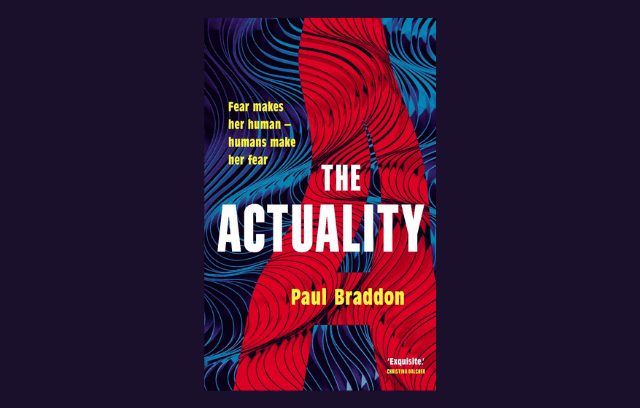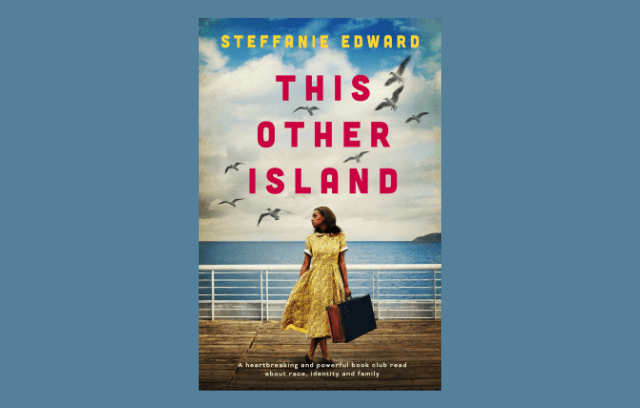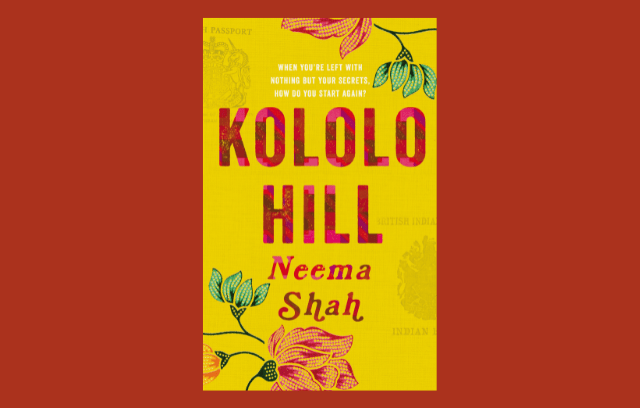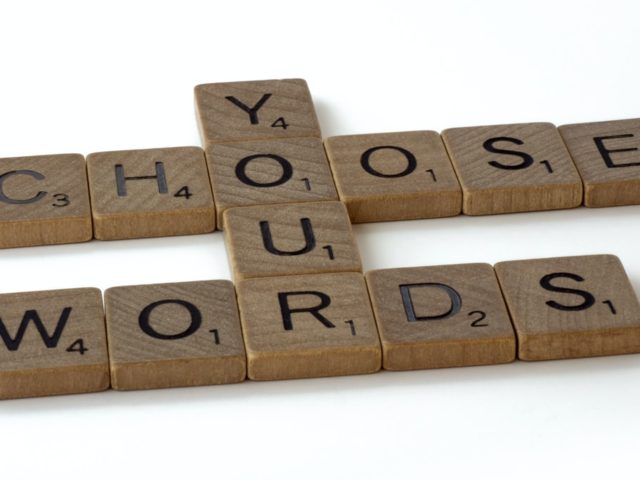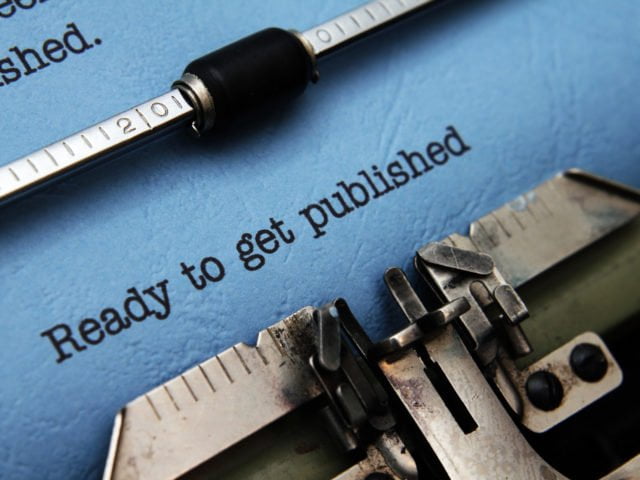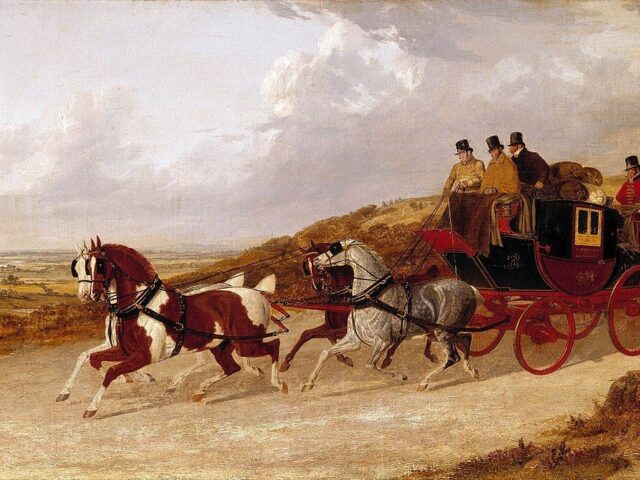The ultimate guide for serious self-publishers, with everything you need to know about kindle publishing and how to sell e-books on Amazon.
This is a jumbo post, because it tells you everything you need to do and how to do it. If you only need to research a specific topic, then use the index on the right hand side. Otherwise, jump right in – and let’s get you self-publishing successfully via KDP, Amazon\'s self-publishing platform.
Self-Publishing – How To Make a Living
An Overview Of Effective Self-Publishing
Step 1: Write A Good Book
Step 2: Create A Strong Cover
Step 3: Prepare Your ‘Look Inside’ Material
Step 4: Prepare Your End Material
Step 5: Format Your E-book
Step 6: Build Your Print Book (If You Want To)
Step 7: Build Your Website
Step 8: Create Your Readers’ Magnet
Step 9: Mailing Lists And Other Technicalities
Step 10: Social Media: Why You Can (Mostly) Ignore This
Step 11: How to Choose Categories (BISAC Codes) On Amazon
Step 12: How To Choose Keywords On Amazon
Step 13: How To Price Your E-Book On Amazon
Step 14: How To Launch Your Free Book
Step 15: How To Launch Your Paid Book
Step 16: The Long Term: Where Do You Go From Here?
Self-publishing: How To Make A Living Via Amazon’s Kindle KDP
The good news: self-publishing is easy these days. If you have a book and a cover, then uploading it is:
Free. You pay nothing to Amazon, though there will be some costs involved in preparing properly.
Fast. Allow 12-24 hours for the book to go live worldwide.
Awesome. KDP can make your work made available to a worldwide audience. That’s something that even the largest traditional publishers can’t offer, unless they have acquired worldwide rights.
That’s the great side of self-publishing, but there are challenges, too, of which the biggest is simply this:
Invisibility. Amazon has 3.4 million titles in ‘literature and fiction’. 3.6 million history titles. Half a million comics and graphic novels. And of course, the flood grows ever bigger. Half a million new titles became available on the Kindle store in the last 90 days alone. Your title might be great, but bury it amongst 499,999 competing titles and it’s still likely to vanish.
In short, self-publishing on Amazon is awesome and scary in about equal measure.
This post will tell you how to publish your work on Amazon in a way that is low-cost (not zero cost), professional, and effective.
Just how effective it is will depend on you, your books, your genre, and how much work you put in. But it is, these days, perfectly realistic to aim at earning a decent living wage from Amazon KDP publishing (possibly supplemented by publishing on Apple, Google, Kobo, etc).
And just to be clear, although a good chunk of my author earnings come from traditional publishing, the money I earn from self-publishing my work in North America alone is excellent. In 2017, I earned $100,000 from just six e-books.
And as you build your range of titles, your readership, your email list and your marketing skills, your income should follow suit.
Yes, it’s hard work. Yes, it involves a little upfront cost. Yes, it depends on some clever tricks of marketing and presentation, but it works.
It worked for me. It can work for you. The same basic principles underlie the success of thousands of other indie authors.
And I’m going to share everything.
This post is basically the ultimate guide to self-publishing your book on the Amazon Kindle store and I’ll update if things need to be tweaked or changed. Since the post is super long, I recommend that you bookmark it and use the Table of Contents up top to navigate. Tweet it, share it, link to it from your website, if it’s all helpful.
To business.
An Overview Of The Self-Publishing Process
Effective self-publishing on Amazon requires:
Strong underlying material. In other words, your book needs to be good. If it’s not, no amount of clever marketing will save it.
A properly presented e-book. What I mean by this is that the cover needs to be strong. The material at the front of your e-book (the ‘Look Inside’ portion) needs to tempt the reader to complete their purchase. The material at the back of the e-book needs to clinch the deal. It needs to turn a one-off reader into a permanent, committed fan. (Not sure which ebook format to use? Then check out this article).
A properly constructed author platform. That means a website, a reader’s magnet and a properly set-up mailing list. If that sounds scary or technical, don’t worry. There’s nothing hard here and I explain it all, anyway.
Sensible pricing. No one will buy your book if it’s too expensive. You won’t make any money if it’s too cheap.
Well-chosen metadata. Another scary term for something that’s basically simple. Because a lot of purchases on Amazon come via different types of search, you need to make sure that your book will pop up in the right places, not the wrong ones. And it’s all easy.
Proper book promotion. So far, everything in this process is about getting ready for publication. Actually launching your book comes right at the end of the process. And, once you’ve built any kind of track record, you do that launch via your mailing list.
You basically tell these guys (your committed fans) that you have a new book for sale. They rush out and buy it. Amazon notices that there’s a huge sales surge in this cool new book, so their search engine starts showing it to more and more people. So now you have totally new readers buying your book and as they enter your world, they start signing up for your mailing list, so your fan base grows and your next book goes even better. All that works well once you’ve got started, but how do you get started in the first place? Well, there are tricks there too and we’ll cover them.
In short, the basic marketing process on Amazon is (A) prepare properly, (B) build a mailing list, (C) sell your work to that mailing list, (D) acquire additional sales from brand new readers who arrive at your work thanks to the visibility acquired via those mailing list sales, then (E) rinse and repeat, ad infinitum.
Once you’ve mastered the basic essence of this underlying technique, you’ll want to add in the following methods too. (I’ve put the easiest techniques first, the harder ones later. Don’t work this list in the wrong order!)
Book promotion sites
Cross promotions with other authors
Amazon Advertising
Bookbub advertising
Facebook advertising
Of these methods, Facebook is probably the most powerful and scalable … but it’s also the most complicated and the easiest place to lose money. Most indie authors want to add Facebook advertising right away. That’s a mistake you pay for – with dollar bills magicked out of your pocket and into Mark Zuckerberg’s Fund For More Digital Wickedness.
And though this post is long, don’t panic.
Yes, there is set-up time and cost involved in getting started, but the basics of marketing are really quite easy thereafter. In July 2015 I launched a book in the US where my complete marketing plan consisted of:
One email to my mailing list.
Nothing else. (My wife had her second set of twins that year and we were … busy.)
I didn’t tweet, post on Facebook, blog or send out review copies or anything else.
You want to know how much money I made?
I earned $30,000 from that one email and, since then, things have only got better. I’m going to show you how to do all of that, so buckle up as we hit the detail.
Step 1. Write A Good Book
People always laugh when I say that, “Write a good book,” but it’s the only absolute essential of the whole marketing process.
It’s also the area where writers most tend to rush things. (Simple starter guide on writing a book here.)
Again and again, we see writers struggling to achieve sales on Amazon. They talk with intensity about their metadata, their Facebook campaigns, their experiments with permafree and a million other things but when I look at their books, they’re too often just not good enough.
And if your product isn’t a hundred percent, your sales will only ever be mediocre. Remember that if you’re writing thrillers, you are selling head-to-head against Lee Child and John Grisham. If you’re writing YA fiction, you are selling head-to-head against Stephenie Meyer and Veronica Roth.
Getting nice comments from your beta-readers is not enough, because – scary truth – everyone gets nice comments from their beta-readers, so do things properly.
Hone your craft, say with a writing course. Get detailed feedback from professional, third-party editors like ours. Put your work in the way of people who are skilled at finding flaws, not too quickly generous with praise.
There are a lot of different editorial services out there; from manuscript assessments to developmental editing. We obviously think ours are pretty good, but do check out what different types of editing have to offer. Some of them are damn expensive and best avoided.
There’s one school of thought, which is that you may as well get your work out there. Make some sales, acquire some readers, and learn on the job. Well, maybe, but I think that’s the wrong attitude. I think the writers who succeed are the ones who want to put the best possible product out there always, every time.
And indeed, in self-publishing, there’s a strong argument which says that book #1 in your series should be the best one you write. That’s the portal into your series. That’s the one which hooks fans and compels them to read on. If you write a dud Book #4, your core readers will forgive you and buy Book #5 anyway. If you write a dud Book #1, you won’t have any readers for anything else you write.
Another way to look at the same thing:
Great marketing + a lousy product = a lifetime of struggleSo-so marketing + a brilliant product = easy sales
A great book is the foundation for everything else. So get it right. Build those foundations strong. They’re going to support your entire career.
Step 2. Create A Strong Cover
The cover is second in importance only to the book itself.
If the cover doesn’t immediately appeal to your core reader, then that reader won’t even arrive on your first page to read a single word. You must get the cover right. Nothing less than perfect is enough.
That means your cover needs to:
Look good in thumbnail.
The book must work at small scale. Designers always like showing you the hi-res version of their image, which is fine, it needs to look nice at scale, too. Still, your very first task is to shrink that right down and see if it works when tiny.
Look good when compared with competing titles.
I always copy that thumbnail sized image onto a screengrab of an Amazon search page, full of books written by my own direct competition. Then I ask: does my image look competitive on that page? If not, try again.
Inform the reader instantly what kind of book it is.
A YA dystopian cover should announce its YA dystopia instantly. A rom-com cover should be instantly interpretable as such. Yes, that means that those covers tend towards clichés, but in this case, that’s good. The first task of a cover is to say, “I am a book of this genre”, where said genre is a rom-com, or thriller, or romance, or whatever else you’re selling.
Convey a mood or feeling.
Readers typically buy books because of a hook and a feeling, e.g.: ‘It’s this book about an ordinary girl and vampire who fall for each other.’ That’s a hook plus a feeling, giving a reason to buy.
A book cover can’t really convey the hook (that’s the job of your blurb), but it can and must convey the feeling. Those Twilight covers conveyed a general sense of dark, forbidden sexiness. That was all they needed to do, and they did it superbly.
Generate questions, don’t close them off.
Covers that answer questions don’t tempt readers in. Covers that prompt questions invite further exploration. Stephenie Meyer’s Twilight cover is a good example. Why that girl? That apple? That black background? You instantly want to know more.
If the cover had been pretty-girl-plus-hunky-vampire gazing adoringly into each other’s eyes, it would have sold some copies, but never have been the global hit it became. Similarly, your approach to your subject matters needs to be oblique and suggestive, not right on the nose.
Use good quality images.
That’s sort of obvious, but it’s common to see self-published books where the images look like (and almost certainly are) stock images from some free or low-cost image library. And they don’t look bad, exactly, they just look like stock images. They have a seen-it-before quality, death to your project of attracting a reader’s eye. If you need to pay money for a top-dollar image, then pay that money.
Use good quality typography.
Again obvious, but getting the typography (font styles, etc.) on a book is harder than it sounds. If a draft cover feels a tiny bit ‘off’ when you see it, then it is wrong. That feeling never lies.
So once you know what you want to achieve, how do you achieve it?
It’s strangely hard.
You’d think getting a strong book cover was a reasonably mechanical process. You write a design brief. You hand it to a competent person. Boof, you get back a design that’s going to be anywhere from good to excellent.
And, in my experience, it’s not really like that.
I’ve had poor to mediocre covers from best-of-breed traditional publishers. I’ve had mediocre book covers from talented, award-winning freelancers. I’ve used competition type websites with results that were okay, but not utterly satisfactory. And, yes, I’ve also got some book covers that I’m totally happy with.
So my recipe for success is as follows:
Fire your Uncle Bob. Unless your friend, relative, etc., is a professional designer, that person is not right for you. And yes, you may save some money. But NASA would probably save some money by patching their rockets together from stuff found in a junkyard. There’s a reason they don’t do it.
Use pros. You can go to competition type websites, of which 99Designs is the most prominent example. (Personally, I think you have to pay a lot of $$$ to get a good outcome from this, however.) You can go to outsourcing type sites like Fiverr or Upwork. You can search libraries of premade book covers for sale (for example, The Book Cover Designer. You can just Google around (search “book cover designers”) and look at different offerings. Or, simply design your own ebook cover. There are pros and cons to every avenue and in the end, there’s no one-size-fits-all solution. You may blunder around a bit until you find the right solution for you, but that’s fine. This is a creative process and you may need to experiment before you get it right.
Spend money. Just to be clear: the phrase “blunder around a bit” can mean “spend some money getting projects started with designers who looked really great (and are great, actually), just you didn’t like their initial designs and twigged things weren’t going to work out.” Don’t end up settling for almost-good, because you couldn’t bear to write off the $150 that you had to spend. Either invest again with the same designer to get something you’re happy with or close off that avenue and start again. Remember that your first cover will almost certainly be by far your most expensive. Once you’ve settled the look (the kind of image, the mood, the typography, etc.), the next batch of covers will be easy-peasy.
Only work with people where you’re happy saying ‘no, not yet’.
This is a crucial one. You must be happy with your cover. That means continuing to look at images, to work away at typographical niggles, until you’re genuinely delighted. If your designer charges you $90 an hour beyond a certain level of changes, or if your (talented, but not infinitely patient) Uncle Bob is just going to start rolling his eyes, then those people may not be right. You must feel okay with demanding perfection. And yes, that may mean being pushier than you normally like to be, but it also means working with someone where you can feel safe to be pushier.
If you’re unsure, look up more tips on how to commission ebook cover designs here.
Now we turn to the book itself.
Step 3. Create Your Ebook: ‘Look Inside’
What is the front material there to do?
For ebooks, there is only one answer: the front material is there to convert ‘Look Inside’ browsers to people who buy your book. It’s effectively a front door that has to look welcoming if you want to tempt readers inside.
If your front-end material does not directly contribute to that goal, then it needs to go elsewhere.
Yes, you may want to find room for your thanks, your copyright notices and all the rest. Those things don’t make people buy your book, though, so bury them at the back.
The front of your e-book probably only needs:
The cover – because you need it, and readers expect and want it.
A title page – ditto.
Formal proofs – that means any plugs from fellow authors, from newspaper reviews, or anything which tells readers, ‘Yes, serious, professional readers have read this book and rated it highly’. At the start of your career, you may struggle with those formal proofs, but that’s fine. All new authors are in the same position. Do what you can, but don’t fret too much.
Social proofs – in other words, any comments from readers that tell people, ‘Yep, people like you have read and enjoyed this book.’ Social proof is quite possibly just as important, maybe more important, than any number of great notices in the New York Times Review of Books, and even as a newbie, you can accumulate social proofs. So go do it. And put those proofs up front where casual browsers can find them.
Constant reminders about what your book is and what it offers.
Remember that people who click on the ‘Look Inside’ feature may well only be browsing in quite a casual way. They’ll have sort of took in your cover design, sort of read your book description. Just as bookstore browsers flip books over to look at them in quite a casual way, though, so it is with people browsing on Amazon.
You need to assume that these browsers haven’t intently studied anything. They are only two or three clicks away from buying something quite else.
Hammer home your message, by carefully choosing formal and social proofs and other related text.
My own ‘Look Inside’ text will try to remind readers that, “This is an exciting crime thriller featuring a really interesting female detective.” That proposition won’t appeal to all readers, but it should appeal to the kind of readers my book is aimed it. So make it clear. Keep it uppermost in the browser’s mind.
Offer a freebie.
I’m going to talk more about readers’ magnets and email lists in a later section of this post, so for now, just notice that I recommend you offer a freebie, a story available for readers to download for free, up at the front of your e-book. We’ll talk more about what and why soon.
And plenty of text!
The shorter your other front material, the more room you have to give readers what they really want, which is a taste of your book itself. Make sure that your first chapter is strong, and let readers get there fast!
Step 4. Create Your Ebook: End Material
If the front material in your e-book is there to persuade the browser to buy, the end material has a rather more complex set of functions. It should:
Get your readers to buy another book from you.
Get your readers to give you their email address.
Build a real human bond between you and your reader.
Encourage readers to write reviews.
Make the extent and structure of your book series and other works really clear.
The thinking here is simple. A reader has just finished your book. We have to assume they enjoyed it (if they didn’t, no marketing genius in the world will entice further sales.) So what next? Now is the moment to reach out and build a lasting bond between you and the reader.
E-books that just finish without doing that are kind of like the door in the image: they kick you out onto the street, leaving a slightly disappointed feeling behind. E-books that look after the reader are far likelier to create a pool of keen buyers, who’ll come back to your work again and again and again.
So how to achieve those happy results? Answer:
Write an author’s note that feels personal. Make sure it’s full of your voice and personality, and directly thanks (perhaps even compliments) your readers.
Invite participation
Notably by encouraging readers to give you their email address in exchange for a free story from you. More on this shortly (and it’s key, you can’t miss this step).
Be smart about offering those buy links. Remember that Apple won’t accept books with Amazon links in, so you can either (A) work exclusively with Amazon (probably the best bet for newcomers to indie-dom), (B) have a mobi (Kindle) file that is different from your epub (Apple, Google, Kobo, and everyone else) file, or (C) create a landing page like this to let readers choose their own store.
Remember that e-readers are probably reading in an online environment where they can take instant action, meaning print books are a terrible model for how to put together your end-material. Web design is a better model. You want easy-to-access links in places where your readers may want to take actions enabled by those links.
In other words, don’t just talk about other books in your series, make it simple for readers to buy those books on Amazon, Google, Kobo, wherever. Making it easy will make a huge difference to your conversions and that means making a difference to your pocket.
Step 5. Format Your Ebook
Don’t feel too fussed by this. Writing a great book, preparing inviting front material, developing material at the back of the book that seals the deal with the reader, those things matter. The rest is a technical exercise that you can either do yourself or outsource. It’s not expensive and easily done.
So first, make sure that your Word file is in good shape to be converted. We’ve lots more advice if you need on how to format your ebook. (This section assumes that your MS is basically textual. If you are creating a design-led book that involves a lot of images, then Visme offers a great, simple, e-book creator. Did I mention that it’s free? Well, yes, it’s free.)
Then, iff you’re working exclusively with Amazon (which, as I say, I recommend when starting out), then you can just upload your Word document to Amazon. It’ll make the conversion for you. And boom, that’s it.
If you are distributing to all the e-stores, you’ll need an epub file, not just a mobi one. You can create that file yourself via simple online tools, Scrivener being one option (you pay for this, but it has loads of other features and loads of writers swear by it). Calibre is another. Apple users love Vellum. Some e-book distributors, for example Draft2Digital, offer free online tools that are very simple to use and come with no strings attached.
Whatever route you take, just make sure that you preview the ebook before going live with it. All the those conversion tools offer previews, and just go through, checking every page. This is your product we’re talking about. Checking matters!
Step 6. Want A Print Book? Then Sort That, Too.
Most self-publishers will sell work in e-form, not book-form. My own e-sales are probably about fifteen times greater than hard-copy sales. (With my traditionally published work, the balance is much more even, or even leans more to print.)
What’s more, print books are harder, more expensive to put together. You have much less control over the selling price. A lot of the promotional techniques that work brilliantly for ebooks don’t work as well for print. And so on.
I say that to be honest, not to put you off. I sell several thousand self-published print books each year. I make a little over $3 per sale, so I end up with a satisfying amount in my pocket because of those sales.
And I do nothing at all to promote those books.
Nothing.
All I do is promote my e-books actively and intelligently via the Kindle Store and elsewhere, and that visibility brings my work to the attention of some readers who think. ‘Hey, this looks good, but I’d rather have it in hard copy.’
And it’s easy enough to add a print element on to your offering.
KDP offers a print option too. You’ll need a back jacket and spine design, as well as your front cover (but those things are easy, once you have the front sorted). The additional cost involved is minimal.
You’ll also need interior formatting, to be sure your book looks lovely when laid out on the page. Don’t try to do that yourself – it’s harder than you think. Your best bet is an outfit, BB eBooks, which is based in Thailand and combines excellent experience and quality with Thai pricing.
Once you have your cover and your text, you just upload them via KDP. Bingo.
Worried about an ISBN? Don’t be. Ebooks don’t need one and most top-performing indies don’t bother with them at all. In terms of your print books, your print partner will sort out an ISBN for you. So, for example, if you create print books via Amazon KDP (your best starting option), Amazon will simply take care of it for you. Easy!
Just remember, e-sales are likely to predominate by a large margin, and your print sales will only start to take off if your e-sales do. National or international distribution via bookshops is basically a fantasy, unless you have a traditional publisher to take care of that for you.
Step 7. Build Your Website
You know you need a website, but why? What do you want it to do for you?
There are lots of flaky, fuzzy answers floating around the internet, and they’re almost all wrong.
Some people will tell you:
‘Oh, it’s a key part of your brand. You need to build a platform.’
Really? Why? Most readers will surely just be happy with (a) the book, and (b) Amazon. Why do they need anything else?
Or:
‘You need to make yourself discoverable by search engines.’
This is rubbish. Or it is if you’re writing fiction. Google-search and similar just doesn’t matter to most novelists. How could it?
Here’s the one thing you need to know about your author website.
Your website is there to collect reader’s email addresses.
That is its purpose. That is why you have it.
If it does that and almost nothing else, you’re doing fine. (Or, full disclosure, that’s true if you’re a novelist. If you’re writing non-fiction, then the truth may be a bit more complicated.)
Yes, you will probably want a page for each one of your books. Yes, you probably want some kind of bio. Yes, you probably want a contact page. If you like writing blogs, you probably want a ‘news’ or ‘blog’ type page as well.
Still, I can’t even remember the last time I posted on my author blog. I don’t make sales from my book-specific pages (I make them on Amazon.) The contact function is nice because it means readers can get in touch with me, but if I disabled the page, the world wouldn’t collapse and my sales would remain untouched.
Your website is there to collect reader’s email addresses – and how does it do that?
Well, the primary chain is simple. It’s this:
You have a link in your e-book that says, “I’ve got a free story for you, please come and get it”.
That links passes the reader to a page on your website that handles that story-for-email exchange.
The reader gets your free story. You get a way to contact them in the future.
That’s a fair exchange: you are, in a way, giving the reader something of more value than the thing they’re giving you. And it’s an honest one. You will make it clear that yes, you will retain that reader’s email address and sometimes make use of it, though only for matters directly related to your books.
The way you structure that basic exchange is critical.
Tiny differences in set-up will make a few percentage point impacts on your conversion rates, and, when cumulated, those little impacts can make a huge difference to the success of your campaign.
Your ebooks need to take people to a page on your website that maxes the number of people downloading your story.
Here is an example of a good page from my own website (and see what happens when you click the buttons – functionality matters).
Key design points to consider are:
Eliminate all in-site navigation. This page exists on my website and has completely normal navigation tools up at the top, excepting this page. On this page, I want people to click those buttons. I don’t want them to be distracted by any other good stuff I have on the site. This page has to say, “Either download the story, or close this page: there is nothing else to do, read, see here.”
Have incredibly obvious calls to action. Giant orange buttons on a monochrome background works for me.
Don’t ask for an email address straight away. It’s better to make it a two-stage process: (A) let the reader give you an order: “give me my freebie”, then (B) obey the command. And it just so happens that obeying that command involves collecting an email address.
Around two thirds of visitors to my website end up leaving me their email address. They’re readers who have liked my work enough to buy it in the past, and to collect the free story I’ve offered. Those are the people who are likeliest to buy my work again in the future, and now I have a way to get in touch with them direct.
Since you’re building a website, too, you may as well do the obvious bits right. Its branding should be synced with your books’ branding. The site should communicate what you are all about as an author as swiftly as your book covers do. Your site should be mobile responsive, so that it looks as good on a phone as it does on a PC or tablet.
And so on. There are other bits and pieces to get right, but any half-way competent designer should do them fine.
A few rules to follow are these:
Pay that little bit extra for your own domain name. So pay for JaneSmith.com or JaneSmithAuthor.com. Yes, janesmith.wordpress.com is cheaper, but you’ll regret it in the long rum.
Use WordPress. Wix and Squarespace and their like are cheaper in the short run, but they have vastly less power than WordPress. So again: think long term, not short term.
WordPress needs a theme – a stylistic chassis, in effect – to hold your site together. I strongly recommend Parallax for Writers, because it’s great, it’s designed for you, and it’s crazy cheap.
Learn a little bit of basic tech. You don’t have to be a tech wizard – I’m not – but if you know nothing, you’ll always have to go through someone else to make minor site tweaks which means that, after a bit, you won’t even bother.
Your website doesn’t make you money directly, but it’s the launch pad – the blast station – for everything that follows. So build it good, and get ready for launch . . .
Step 8. Create Your Readers’ Magnet
OK, now listen up, because this stuff matters. We’re talking reader magnets.
A reader’s magnet is a free story you give to your readers in exchange for their email address.
You advertise the freebie in the front and back of your ebook to maximise the number of people who take you up on that incentive.
You will then use the email list you build to bond with readers, launch books, boost promotions and, in general, to send you off, giggling, to the bank driving your own gold-plated Cadillac with a trunk stuffed with high denomination bills.
To secure these outcomes, your reader magnet needs to be good.
So be sure your story lives (broadly speaking) in the same fictional world as your for-sale novels. You can’t use a horror-fiction magnet as a lure for your fluffy romance readers, or vice versa. Be sure that your magnet is well-presented and has a lovely book cover.
Obviously, you’re going to scatter plenty of links in your ebook (the front and back of it, not the actual text), so readers can’t miss the fact you have something free to offer. I also recommend you make at least some of those links visual (i.e. you use a book cover or similar) to invite the eye. Text links are great, and you should use those, but visual plus text beats text alone.
That story you offer does not need to be a full-length novel. Anything from 5 to 15,000 words is fine. Just make sure it’s a satisfying piece of quality writing. Don’t cheat your reader.
And that’s it. One story (a magnet) to attract readers and collect email addresses. That already sounds good, but in fact, as we’ll see, it’s going to form the absolute heart of your promotion strategy.
Step 9. Mailing Lists And Other Technicalities
Now we’ve got links in our e-books to take readers to your website, where the story-for-email exchange is made, but how does the actual plumbing of all that work?
The answer is that you will need two tools.
The first is Mailchimp (or any other mailing list provider.) They will store your email list, send mass emails, eliminate duplicates, handle the unsubscribe process, and plenty more. Some people find Mailchimp hard to use and prefer Mailerlite. If you are ambitious and tech-confident, you might want to use the more powerful Convertkit.
The second is Bookfunnel, an outfit that makes the delivery of your free ebook (your reader’s magnet) unbelievably simple – both for you and for your reader.
Both services are paid, but the money isn’t crazy. You’ll pay $100 a year for Bookfunnel, and Mailchimp is free until you hit 2,000 mailing list subscribers, and $20-30 monthly thereafter.
Bookfunnel is so simple to use, you won’t need any help setting it up. In fact, I would be insulting you if I told you how to use Bookfunnel, so I won’t.
(Phew. We’re still friends.)
Integrating Mailchimp with your website could require help, depending how much you hate fooling around with that kind of thing, but don’t cut corners. Creating a smooth path for your readers is key. They need to:
See a link in your ebook.
Click over to a (navigation-free) landing page on your website.
Hand over an email (to your Mailchimp mailing list).
Be delivered a book via Bookfunnel.
That’s all easy. If you need help with web bits, then get this. Again: all this set-up stuff can seem boring, but so is climbing up a long flight of steps. You’ve got to put the effort in, if you want the reward at the end. Rushing to publish too soon is the absolutely class, #1, gold-plated mistake that most indies make.
Put in the effort, then enjoy the rewards.
There’s a lot to take in, right?
There is, yes. Self-publishing is more complicated than regular publishing, especially at the start. (Later on, it can actually seem simpler in many ways, especially if you hate giving up control.)
But still: a lot to take in. A lot to do. And there’s this horrible (but accurate) sense that getting the detail right really matters.
That’s kind of yikes!, right?
Well, yes and no. Because the thing is we created an entire step-by-step video course that’s intended to be everything you need to know about getting set up as a self-publisher. That course is super-premium, which is a fancy way of saying (a) really high quality, and (b) scarily expensive.
So don’t buy the course!
That’s right: don’t buy it.
It’s a great course, but it’s expensive, and you’re on budget, so – don’t buy it.
After all, why buy, when you could rent? For a crazy-cheap (and cancel-any-time) monthly fee, you can become a member of Jericho Writers – a club designed for writers just like you.
Quite simply, we aim to give members as much as we possibly can. An insane amount of value for as little as we can possibly charge. Think of us as a kind of Netflix for writers.
So members get unlimited access to our self-publishing course.
And unlimited access to a whole heap of filmed masterclasses, including some brilliant ones on self-publishing.
And filmed interviews with authors and agents and publishers. And an incredibly supportive community. And live webinars from top experts on all the topics that matter most to you.
Why so much? And why so much for so little? Well, that’s easy.
We’re writers too, and we built our club for writers like you, writers like us. You can find out more about joining us here. We really hope you do.
Step 10. Social Media: Why You Can (Mostly) Ignore This
A lot of writers worry that self-publishing is going to be all about bigging yourself up on social media. Endless tweets, endless bragging Facebook posts.
And it’s not. It’s not.
Those things don’t work. They’re a waste of time. They’re horrible to do.
I do have a Twitter account and an author page on Facebook, but I don’t get book sales via either route. (I have a Twitter account mostly because that makes it easy for Twitterholics to contact me if they want. Some of those contacts have proved of real value. I also have an author page on Facebook because a traditionally publisher once told me I had to have one. I got one, and neither they nor I ever used it.)
Nor do you need to blog.
Although I do blog here, I hardly ever blog about author things on my own website. And if I do, that’s because I feel like doing it. Actual book sales deriving from those blogs are trivial.
There will be categories of author where social media does really matter. If you’re a fashion blogger wanting to sell books, you’ll need an Instagram following, and so on.
It’s also true that social media can be a great way to network with fellow authors and influential bloggers in your niche. Those relationships are worth fostering but they’re not, directly, to do with selling books at all.
For most of us, the big news is this:
If you hate social media and want nothing to do with it, you can still sell books very effectively on Amazon.
If you don’t want to blog routinely or do the work involved in building a large following, that’s fine, too. It doesn’t matter.
To be clear, there are exceptions.
In particular, if you build a strong audience on Facebook, you will make your FB advertising life a lot, lot easier. If you’re interested in doing that, the rules are:
Stay narrowly focused on your audience and their interests. Don’t ever stray from that core.
Quality posts and interactions beat quantity. Post good stuff when you have something good to say.
Be recognisable. When people scroll down their feeds you want them to know it’s your content straight away. Instasize is a great app for editing your images and keeping them on brand.
If/when you have a decent FB following, you should pay to boost your launch post / promo posts.
You can also think about advertising to your FB audience to support your email and boosted post campaigns. These are later stage tactics, though, and you can safely ignore these for now.
If you’re nervous of getting involved in all that stuff, though, don’t be. Just forget about. You don’t need it. (For now.)
Step 11. How To Choose Categories (Bisac Codes) On Amazon
When a bookshop shelves your book, they need to choose where to shelve it. With romance? With crime? With general fiction? With health and beauty? Or what?
It’s the same with Amazon, except that Amazon has far more categories. When you upload your book to Amazon (which is easy, and has become easier) you will see a little box prompting, and you need to choose categories highly relevant to your book.
It’s important to understand the reason for this.
You’re not choosing categories because you want to help Amazon with its filing.
You are choosing categories in order to sell more books.
Amazon has an overall bestseller list, of course, but it also has a massive range of sub-bestseller lists – for things like “Fiction > Crime” or “Fiction > Mystery & Detective > International Mystery & Crime”.
Readers like perusing those lists, and Amazon likes to direct them there. If you can get on your chosen lists, your book will get more eyeballs, and all the clever stuff we’ve already put in place will convert those browsers into buyers.
You need to choose categories by thinking of bestseller lists you’d most like to be on, and which you have a realistic chance of appearing on.
That’s the whole deal right there. That’s (almost) all you need to know about choosing categories.
For newer authors, it’s better to target rather more niche lists – in my case, “International Mystery & Crime” is more niche than “Fiction & Crime”. It won’t get as many viewers, but my chances of sitting close to the top of the list and staying there for a time outweighs that issue.
Also – pro tip here – if you are picking a sub-category (eg: international mystery & crime), you are automatically entered in the relevant parent category (in this case, mystery & detective). So don’t waste your second category choice by entering the parent category as well as the child.
Until you have a little experience of your book, your genre, your sales, you are largely guessing as to which lists to target. But at least you know what you’re doing here.
If you are already published, then check out your Also Boughts to understand what kind of readers you have – what other books they like. You can use Goodreads or other online book recommendation tools to achieve the same kind of thing.
Two last things on this topic:
Amazon now uses the term ‘categories’ for this selection process. It used to talk about BISAC codes, a hoary old library classification system. You may come across both terms being used, but don’t worry about it. They’re the same thing.
You need to read this section, on categories, in conjunction with the one that follows, on keywords. It’s when you put those two things together that the magic happens.
Step 12. How To Choose Keywords On Amazon
When you come to upload your book, Amazon will ask you to give it seven keywords that describe your book. (As you’ll see, some of those keywords can be two or three word phrases. That’s fine, but the term keyword is still used.)
So far, so easy.
Whilst categories have only one role (they let you choose what bestseller lists to target), Amazon keywords have two roles to play, and they both matter.
Those keywords let you:
Choose what sub-bestseller lists to target.
Choose what thematic searches to target.
Take the first of those things.
When you look at the overall Amazon bestseller list, you’ll see that there are 330,000 or so mystery and detective books available for sale.
If you’ve targeted that list, you might be a little nervous. You think your book is good, but do you really want to fight off 329,999 other bad-asses?
What you need to do is break that group of 330,000 titles down into manageable sub-units, and if you click on the relevant broad category, you’ll see Amazon has given you a host of more manageable sub-units or mini-bestseller lists.
Under ‘Moods & Themes’, for instance, I’m given various boxes to check under words like ‘Action-packed’, ‘Horror’, ‘Racy’, ‘Noir’, and more words to define the feel of my book. Under ‘Characters’, I’m given ‘Female Protagonists’, ‘British Detectives’, and so on.
And something magical happens.
Counting the number of books allocated to Amazon categories I want, the book count – i.e. your competition – goes down.
More than half your competition disappears, just because authors and publishers haven’t chosen keywords that pin down good books into relevant sub-categories. (Recent changes have removed those numbers from the Amazon site, so you can’t now check what I’m saying. It’s still true, however!)
Now you’re not going to get caught in that disappearing act, because you’re going to do this:
Pick your broad category,
Go to the relevant Amazon bestseller list
Finding out which sub-categories might be relevant to your work. (You are looking at the left hand sidebar for this.)
Pick out all the sub-categories which might apply to your work
Use those sub-category titles as your keywords
Obviously, it’s important that you don’t cheat at this, or your readers will feel cheated, too.
So if your book isn’t racy, don’t use that keyword just because you feel you could clamber onto that list. If you see a sub-category where your readers are likely to gather, then jump on it. That’s it.
Oh and the best way to find bestseller lists is just to enter ‘Books’ or ‘Kindle Store’ in the dropdown box on the Amazon search bar, and then, leaving the search bar blank, hit enter. Since the search bar is blank, Amazon knows you want to look for books but doesn’t know which books you want, so it just takes you to its default book navigation page. You want to explore the left-hand sidebar. That little baby is your friend.
A useful pro tip here is that you can use multi-word phrases as your keywords, and every word counts. So for example, my sub-categories include options like Dark, Disturbing, Noir. My books tick all those boxes, so I could use three keywords to scoop up those terms … or, much better, I could have “Dark Disturbing Noir” as one keyword, and keep my powder dry.
Keywords are best used in this sub-category extension way, but remember that people use Amazon’s search engine in multiple different ways. So people can find books in at least four ways:
Author name (“Harry Bingham)
Book title (“Talking to the Dead”)
Series name (“Fiona Griffiths series”)
General search (eg: “Murder mystery novels”)
Now although it seems obvious you want to scoop up general search enquiries, it’s very doubtful that you’ll actually get a ton of sales from that route. Yes, “Gripping thriller” might seem like a great keyword, but if there’s any traffic on that term, it’s most unlikely that you’ll appear anywhere near the top of an Amazon search page. And if there’s no great traffic on the term, you won’t get any sales anyway.
So don’t spend too much time on your general search terms, but for what it’s worth, here are the guidelines:
Make a list of possible keywords – at least 12-15 if you want to do this properly.
Start to type the first few characters into Amazon’s search bar
Take a look at the autocomplete suggestions, and adjust your terms if Amazon is nudging you towards a slightly different version of your search term.
Then actually look at the page of results that comes up. Check out the bestseller rank of the lowest ranked book. If that book is #5000 on the overall bestseller lists, it’s a pretty safe bet that your work will never meaningfully appear for that search term. If the lowest ranked book is #50,000, then you have a decent chance of appearing on that list, at least during launch/promo periods. If the lowest ranked book is #500,000 or below, then you can pretty much bet that there’s not enough traffic on this search term for you to care much about it anyway.
To sum up this section:
Choose categories according to what overall bestseller list you want to appear on. (Important)
Choose keywords first according to what sub-bestseller lists you want to appear on. (Important)
Choose keywords next according to what you think your readers will be searching for. (Not important)
The whole exercise might take an hour or two, but can generate steady sales for years to come.
Step 13. How To Price Your E-book On Amazon
Pricing is scary, but also easy.
The data you need:
Free e-books get more downloads than paid ones.
77% of readers who download free work also buy paid work.
Amazon offers two royalty bands of 70% and 35%. You get the 70% royalty if you price inside $2.99 – $9.99. Anywhere else, you get 35% royalty.
Indie authors tend to price work (excluding free and promotional material) in the $2.99 – $4.99 range.
It’s the same broadly for Amazon Publishing. That fact is relevant, because no one is going to be smarter than Amazon at interpreting data from pricing experiments. If $5.99 is their ceiling (and it is), then it should be yours.
And that, really is all you need to know. Your price envelope is basically $0.00 to $4.99. (Some niches may vary, though, so always check against your own genre.)
Now, pretty obviously, we don’t love $0.00 sales as much as we love $4.99 sales, but we’re going to use the cheap or free pricing, in a kind of Amazon ju-jitsu, to maximise our $4.99 sales.
Free books get you readers. They build your fanbase. They make no money.
$0.99 books get you lots of readers (but fewer than free). They make a bit of money, but not much. Sell a $0.99 e-book and you make $0.35. Sell a $2.99 e-book (at that higher 70% royalty rate) and you make $2.09, so you have to sell 6 times as many of the cheaper books to make as much.
$1.99 books are kind of pointless. They’re too expensive to attract freebie readers, and they’re too cheap to get the 70% royalty. Just don’t price at that price point.
You make money by pricing between $2.99 and $4.99. That’s where the money is. Where exactly you pitch your wares depends on all kinds of things. Do you want to aggressively grow your business in the longer term (while sacrificing some short-term revenues)? Then price at $2.99. Do you want to harvest your existing success? Then price at $4.99. Are your readers generally younger, or poorer? Then price low. Are your book buyers generally more affluent? Then price a little higher. Can’t decide? Then price at $3.99 which is an excellent compromise.
Now we need to do two things. We need to get readers into our sales funnel – into our series – at the kind of price that won’t put anyone off (ie: $0.00 or $0.99), then use the love and commitment we’ve generated with our amazing writing to sell lots more books at $4.99.
In short:
You need to offer a free or highly discounted ($0.99) book to get readers into your universe. Without an existing fanbase, you have few other routes to this happy outcome.
You need to have full price ($2.99 to $4.99) work that puts some money in your pocket.
Those of you competent at mathematics will notice that I’m telling you to write two books to sell one.
And yes, I am saying that.
Except that, as you write more over time, that one free book will start leading readers into a larger pool of paid work. So you’ll be using one free book to sell two, then three, then four, then ten full-price ones.
Also, those of you supremely gifted at mathematics will also have noticed that I’ve told you that:
You have to give away a reader’s magnet, a roughly 10,000-word short story, for example, in order to collect emails.
You need to write two books and one lengthy short story or novella to sell one book.
Really?
Well, yes, really. You are selling a series, not selling a book. If you understand that fully, your selling efforts will be vastly more successful over the long run.
Step 14. How To Launch Your Free E-book
I hope I’ve persuaded you that it’s worth giving away a book for free.
Your purpose is to attract the greater downloads, to acquire fans. And it’s to get the email addresses of those fans so that you can contact them when you have a new book to share.
There are four broad methods for doing this.
Old articles never leave the internet, so you’ll see old advice that appears authoritative, but things change and change fast. Some of those older methods just look limp or expensive or awkward compared with more recent ones, so do read all of this section before you make your pick.
So.
Method 1: Just Give Your Book Away For Free Everywhere
What you’re going to do here is upload your book on Amazon (at $2.99, or whatever), then upload it to Google, and Apple, and Kobo, and everywhere else, too.
It’s too annoying to do that second part yourself, so you get an outfit like Smashwords or Draft2Digital to do it for you. They’ll charge a kind of agency fee on any revenues you make, but pay it. It’s money well-spent.
Then, via your distributor, you simply make the Apple-Google-Kobo price $0.00. That’s easy-peasy. You just do it.
Amazon doesn’t like free. (It’s a shop and it likes selling things.) Look at your book page, though, and scroll down to the Product Details section. You should see at the bottom there a little rubric (with contact links) that looks like this:
“Would you like to tell us about a lower price? If you are a seller for this product, would you like to suggest updates to the product page?”
Well, yes, you would like to tell Amazon about a lower price, so tell them. Report that lower price using the automated tool. I also recommend contacting Amazon more directly via the contact page on the KDP site. Say something like this:
“I’m a serious and long-term author, looking to build fans for my work or series. I’ve made this book available for free through other stores, including Apple, Kobo, Google etc. I would really like it if you would consider making the book free on your store as well. And, to be clear, my long-term aim is to sell a lot of work, at full price, through your store. I very much appreciate your help.”
They won’t guarantee to help. It’s not automatic. Their response is variable in terms of outcomes and timings, but you’re probably fine. Fingers crossed.
The results can be very good. I did a freebie in January 2016 using roughly this method. I notched up about 10,000 downloads in the first week, through Amazon alone. Other e-stores were additional. Some further downloads followed (though at a much lower rate).
And of course, my mailing list took a terrific jump upwards and I got plenty of emails and reviews from readers telling me that they loved that first book so much, they wanted to jump right into the rest of the (paid) series.
Method 2: Give Your Book Away On Amazon Only (For A Limited Period)
If you agree to work exclusively with Amazon – by enrolling in KDP Select – you will enjoy the ability to schedule Kindle Countdown promotions, which give you the opportunity to price your book cheaply, or for free, for 7 days in every 90 day period.
Amazon will promote those deals itself and, if you go for the $0.99 option, you’ll still be on a 70% royalty (rather than the normal 35%).
If you are exclusive to Amazon, and I think the default choice for new authors is probably to go exclusive as you learn the ropes, then you should use these opportunities fully.
(I wouldn’t ever discount for seven continuous days, however. You’ll find that any sales surge quickly tamps down. You’re better off doing one three day and one four day promotion spaced about 1.5 months apart.)
To be clear, though, these short one-off promotions are not really the same as the ‘perma-free’ option we’re mostly talking about. If you want a ‘perma-free’ book, you are probably making that one not Amazon-exclusive, pricing it free elsewhere, then coming back to Amazon as per Method 1 above.
Method 3: Give Your Stuff Away Via Facebook Ads
This approach had a real surge in popularity recently, but it’s a strange one, I think.
With other approaches in this section, you pay nothing (or little) to give your work away for free. With the Facebook approach, you pay real money to acquire each new reader. You literally place ads on Facebook that say (in effect) “Hey, come and get your free book (but you’ll need to give me your email address to get it.)”
And as a method of getting readers, it works, but that new reader of yours might be a flake.
They might or might not read your free giveaway.
They might or might not go on to buy other books in your paid series.
The arithmetic looks like this:
Unit revenue from your free giveaway: $0.00
Unit cost of acquiring those readers: $0.50 (or something like that)
Your profit per reader: -$0.50
That arithmetic does not look attractive to me, but it is possible to make things work, if:
You’re very good at managing your Facebook ads, so you target the right readers and keep your costs per click down very low.
You’re very good at coaxing giveaway-readers into your paid-readership. That normally involves further little free gifts and a strong series of automated emails aimed at shifting kinda-interested readers into committed ones.
You’ve a long tail of paid work to sell because, of course, the more you have to sell, the higher the expected long-term revenue that will be generated by each new reader.
The people who succeed with Facebook ads do tend to have a lot of work to sell and they work hard and intelligently at managing their ad campaigns – which is all fine.
All the same, do you want to be an ad manager or a writer? If (like me) you think the business of managing a Facebook ad portfolio could quickly become wearisome, there are probably better ways to do this.
The one real exception I can think of applies to new writers who do have some cash to spare who just want to get on and do it. Instead of following my (very organic) sales method, where each new book just expands the mailing list and readership ready for the next one, you could just invest (say) $3,000 in basically buying 6,000 reader emails. Just be aware that paid-for emails will have a lower conversion rate than freebie ones. I assume about 1/3.
Method 4: Use Book Promo Sites To Shift Your Work
The best method, however, is to use book promotion sites to get your work out into new hands.
There are two big ways to do this.
One is via book discount sites. These sites have built large reader databases and they email their readers, saying, in effect, “Hey, these great books are on promotion.” You can build surges of attention to your work – and these tools can work very well indeed.
The info you need about these sites can be found via Nicholas Erik here. Use those tools! Especially for newer indies, they are an indispensible way to get the word out.
An excellent additional support is Prolific Works (formerly Instafreebie.) Those guys have good email lists themselves, but they also have great tools for collaborating with other author and cross-promoting work there.
And I’m not going to tell you how to use that site here, because I’ve already told you in detail in this blog post right here.
One indie author, J.N. Chaney, who has used both Facebook ads and Prolific/Instafreebie reports these results:
“I just scaled back my Facebook Lead Ads. I still use them, but I’m now seeing better results with a lower price tag using Instafreebie. … My Facebook budget for that ad was $23 per day yielding an average of 49 subscribers per day at an average CPL [Cost Per Lead] of $.51. … Instafreebie is $20 per month yielding an average of … 84 subscribers per day at a CPL of $.0076. Not even joking. (It could have been 129 per day had I figured out that I need to require an email address to download.)”
I also moved on from Facebook. I use Instafreebie myself, and it’s worked very well for me.
Yeah, there’s a lot to think about isn’t there?
So think about joining Jericho Writers and getting a TON of really classy learning materials that take you step by step through the whole process. I’m not going to give you a heavy sell. I’m just going to say that we built our Jericho Writers club for people like you, and you should think about joining us. You can find out all the details here, and we’d absolutely love it if you went ahead and joined us.
Step 15. How To Launch Your Paid Book On Amazon KDP
We’re there.
We’ve done all our prep work. We have written a great book. Commissioned a great cover. Got great front and end material. We’ve written our reader’s magnet. We’ve got our website and other bits of plumbing in place.
We’ve sorted out our metadata (our BISAC categories and keywords). We’ve figured out our pricing. We’ve got some initial names on our mailing list, probably because we’ve made use of Instafreebie or other tools to distribute free samplers of our work.
And now we want to launch our first proper paid-for book on Amazon.
We don’t just want readers. We want money.
Good. (We need to live.)
Now here’s a simple launch strategy for you to follow:
Upload your book to Amazon, Apple, Google, and everywhere else.
Send an email to your mailing list to tell them your book is now available for sale.
That’s it. Have a drink, go for a long walk, take a nap.
You’re probably thinking, you have got to be kidding, there must be more to it than that.
Must there?
On the one hand, yes, there are advanced strategies out there – and they make sense – but mostly, no. Follow this and you’ll do just fine, so long as your books are good. You can’t sell bad books.
And the ultimate reason for the success of this strategy has to do with Amazon’s sales rank algorithm. That algorithm is crucial, but it involves just a tiny bit of arithmetic, so bear with me.
Every book (indeed, every product) on Amazon’s system has a score which is made up of how many units you sold today, plus half the units you sold yesterday, plus a quarter of the units you sold the day before that, plus an eighth of the units you sold before that, and so on.
A score is calculated for every book on the system. Those scores are placed in order. And, bingo, what you’ve got is Amazon’s sales rank.
That piece of information is astoundingly important.
Why?
It tells you that short term movements in sales are intensely influential in determining overall rank.
Let’s say you want to hit #100 in the Amazon.com Kindle bestseller lists. Good target, right? Well, you have broadly two ways to get there:
You can sell (roughly) 500 e-books every day for a month, or you can sell (roughly) 1000 e-books in a single day.
The first of those things is very hard to achieve. How, after all, would you even do it? Maybe a massive (and expensive) Facebook ads campaign could do it, but you’d end up spending a lot more than you were earning back.
The second of those things, the big, one-off pulse in sales, is easy to achieve.
And you already know how to do it.
You just contact your mailing list and tell them, ‘Hey guys, I’ve got a new book out!’ They like your stuff now, so phrase it well, and they’ll look to buy your book. (On my last launch, 30% of my mailing list bought my book within eight hours of me sending the email.)
And bingo!
That’s your sales surge right there.
The sales surge powers you right up the Amazon sales charts. All the good stuff you did with categories and keywords means your book will get to be visible right where it needs to be: in the exact places that your potential readers are browsing.
All the good stuff you did with covers and your Look Inside section means those browsers will convert into readers. And those guys are new readers. They aren’t buying your book because they were on your mailing list. They’re buying your book because they were casually browsing, but you managed to ensure that your book was under their noses when they were doing so. You’ve just expanded your readership.
And that’s good. But it gets better. Because all the lovely stuff you did with the end material of your book means that your new one-time readers will soon turn into your committed fans. They’ll join your mailing list and expand your reach for the next time you play this game.
And that is the whole secret of successful self-publishing on Amazon.
You turn that wheel and keep it turning, with book launch after book launch. If your work is strong enough to keep your readers reading, your sales will only increase from cycle to cycle.
Step 16. The Long Term: Where DO You Go From Here?
This (uber-massive) post has revealed the basic art of self-publishing success – but, believe it or not, it’s still something of a starter guide, a basic template.
As you get your self-publishing career properly started, you’ll soon start to think about some broader questions, for example:
How often am I going to publish a new book?
Me, personally, I’m very old school. I write one book a year and can’t see myself going much faster than that. Loads of indie-publishers will aim to write and publish a book every three months. If anything, the trend is for writers to try and bring that down to one every two months.
The more you write then (probably) the more money you’ll make, but you’re not just in this game for the money. You want a nice life, and you want to be artistically proud of your books, so where do those things settle for you? Are your current writing rhythms capable of change or are you happy where you are?
What do I do between launches?
The mailing list-driven, sales-spike approach works well to promote your book on launch and you’ll enjoy a lovely month or two of elevated sales as that book floats gently down the rankings.
That still leaves plenty of months where your book sales spitter-spatter along at the rate of a few books per title per day.
How do you gee things up there?
Well, as I say, there are five basic add-on techniques that you will start to use as you build out your series. They are:
Price promotions, combined with Kindle Countdown deals (if you’re Amazon exclusive) and juiced up with the support of one or more book promotion sites. (Info here.) You should look to build this technique into your selling process as soon as you feel ready.
Amazon Advertising. A cranky system has become less cranky and more powerful. You can place Amazon ads on Amazon itself, so you are buying the attention of book browsers direct in-store. That’s great, but (a) Amazon ads are now quite expensive if you don’t have plenty of books in your series, and (b) they are desperately hard to scale. You should find it relatively easy to make some money each month via Amazon Ads, but a lot of money? I don’t think anyone anywhere manages that.
Cross-promos with other authors. Find those authors via Prolific Works or Bokfunnel. Team up with them. Cross promote each other’s work. Make money. This is also easy and a strong way to make sales and build your email list. (Pro tip: don’t team up with anyone who’s not in your genre. You want to keep your email list full of core readers, otherwise you’ll confuse Amazon’s marketing robots.)
Bookbub ads. A very powerful tool once you get it working for you. Read Dave Gaughran’s book. Subscribe to his newsletter. Do as he says.
Facebook ads. Extremely powerful, especially if you have strong website traffic or a busy Facebook page. FB’s ad system is complex however, and it’s easy to lose money. Use this as the final element in your marketing system, not the first.
Are you going to be Amazon-only? Or sell your work everywhere?
You can go either way on this or, indeed, vary your approach. The Amazon-only approach has some advantages in that: (A) it’s easy to manage, (B) you enjoy sales via KDP Select that would otherwise be closed to you, and (C) Amazon is so dominant that you’re accessing most of the market anyway.
And against that?
Well, there are other retailers and they’re keen to make sure that they don’t totally lose out on the indie-publishing boom. Some prominent indie authors get a full 50% of their writing income from the non-Amazon stores, which they’ll achieve using techniques additional to the ones described in this post. With those other retailers, you don’t win via an approach of fire-and-forget, and where you stand on this decision is up to you. There are prominent voices on both sides of the fence.
I strongly urge newer indies to go Amazon exclusive at the start. Once you’ve got a few books out and are hitting, say, $10,000 in annual revenues, you have a decision to make. Till then, stick with Uncle Jeff Bezos.
And don’t worry. Copyright remains with you no matter what. If you ever want to remove your books from Amazon, you’ll still own the copyright to do with as you please.
How do you strike a balance between writing and managing your business?
Personally, I don’t do much business management at all. Most of my mailing list growth is organic: people like my books and sign up. I make enough money with my current approach and I just don’t particularly want to spend my time fiddling around with Facebook ads and the like.
You may feel differently. You’ll have to figure out the balance that’s right for you. You might want to outsource some tasks to third parties. You might want to do it all yourself. A classic small businessperson’s dilemma.
Do I need a literary agent?
Once upon a time, that would have seemed like a strange question. You’re an indie author, right? You’ve turned your back on that whole traditional superstructure – except things do change. If you do well in English language markets, literary agents have a role to play in selling those additional rights. Foreign language sales. Film and TV. Audio. Or maybe you want to go for the full traditional publication with some portion of your portfolio? Or in one specific national market, such as the UK? If you’re not thinking about these things yet, you will probably want to do so in time.
And that’s it – the ultimate (starter) guide to self-publishing on Amazon.
It’s not comprehensive. There’s more to tell – but, this being a starter guide, you have what you need right here on how to self-publish with Amazon. (And if you found it all helpful, do click to tweet: The Ultimate Guide to Self Publishing on Amazon. (We hope!) https://ctt.ec/T8x6a+).
If there are techniques working for you we haven’t covered, which you think others should really be adopting, drop us a line. We’d love to hear.
As ever, best of luck, and happy writing!





